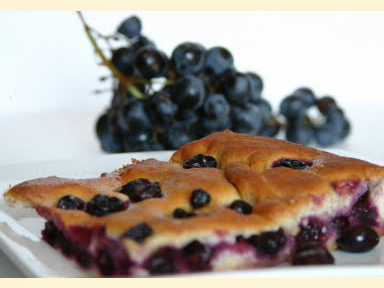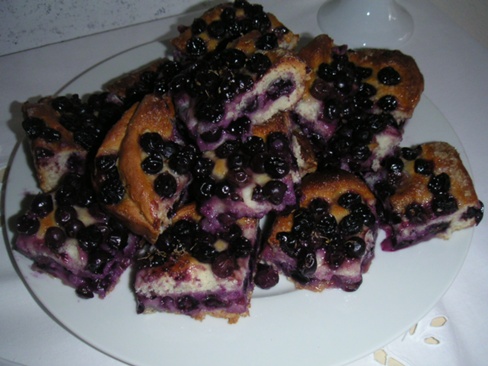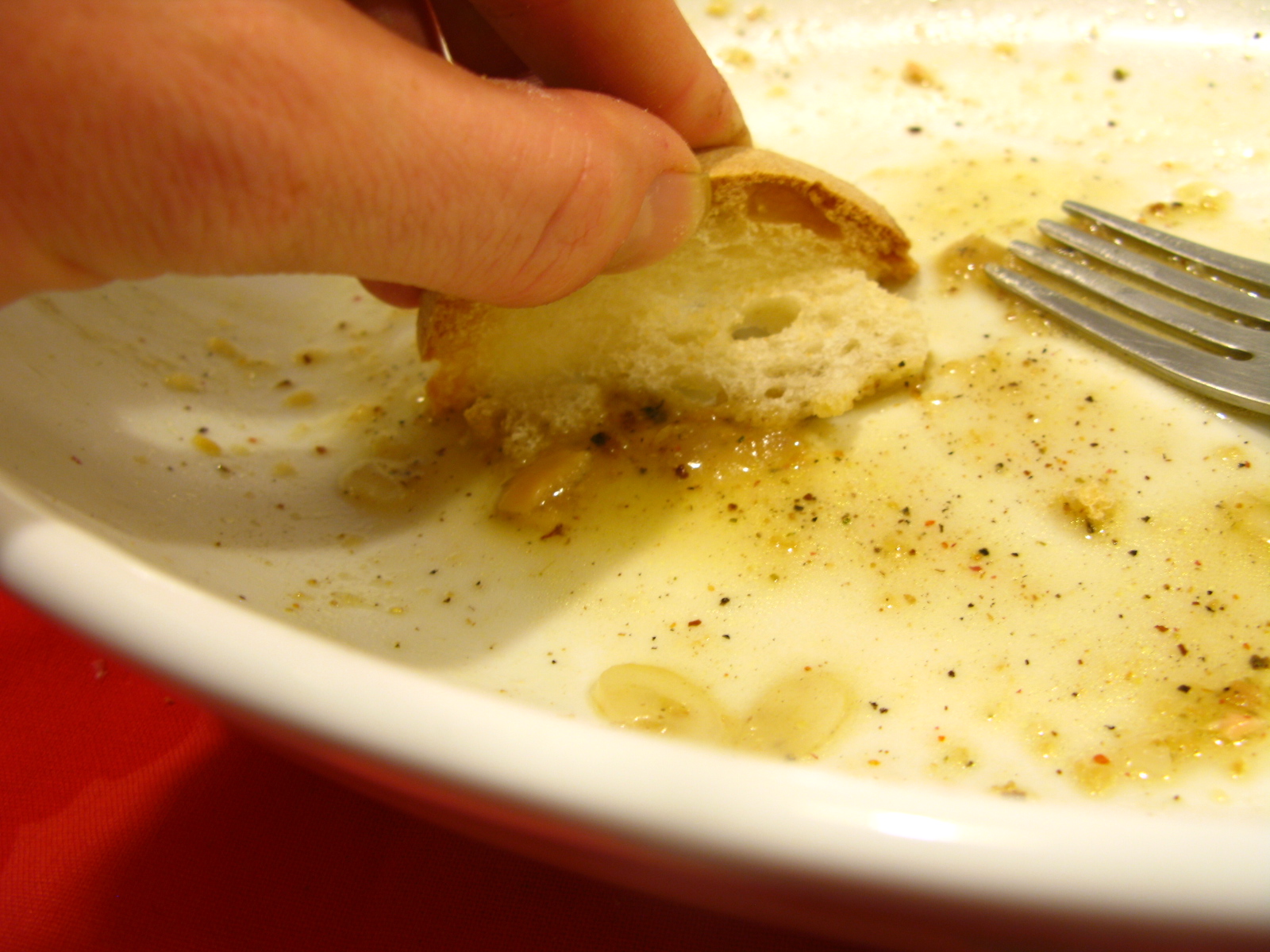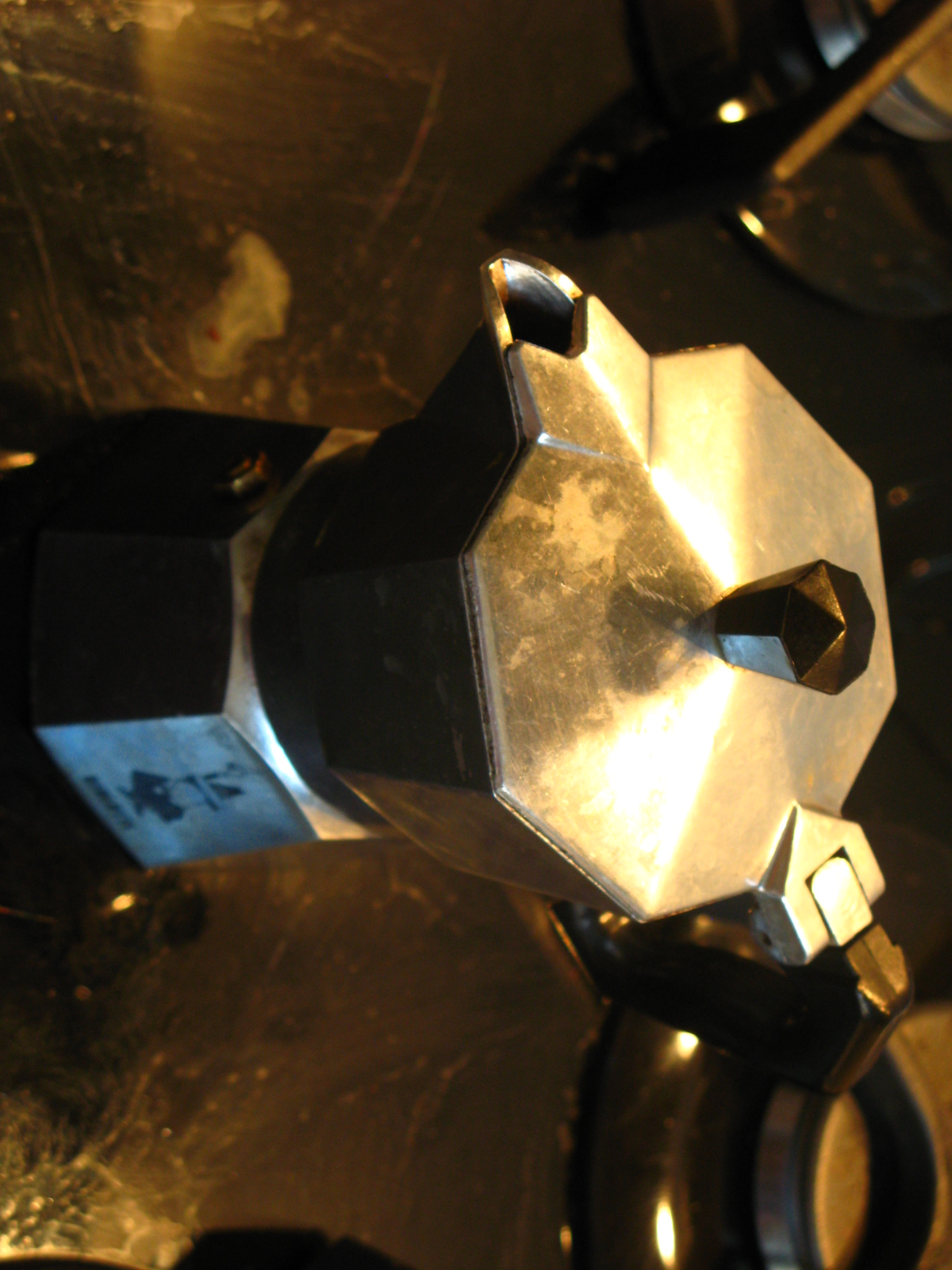Prep Time: 30 minutes
Cook Time: 60 minutes
Total Time: 90 minutes
Ingredients:
- 1 egg
- 1/2 cup (100 g) sugar
- 1/2 cup olive oil
- 3 1/3 cups (400 g) flour
- 1 tablespoon baking powder
- White wine or water sufficient to make a smooth, workable dough (about 1/3 cup)
- 1 k (2 1/4 pounds) wine grapes (either white or red), stripped from their stems, washed, and drained
- ** If You Cannot Find Wine Grapes, See Below Note **
- 1/2 teaspoon anise seeds (optional)
- 1/4 cup chopped walnut meats (optional)
- 1/2 teaspoon freshly chopped rosemary leaves (optional)
Preparation:
Preheat oven to 200 C (400 F)
Mix the egg, sugar, flour, olive oil, baking powder, and enough wine or water to obtain a fairly soft dough. Knead it till it’s smooth, and roll it out to make a sheet large enough to line and cover the pan — a bit thinner than a quarter of an inch thick (4-5 mm).
Grease a 9×14″ cake pan (we use a metal roasting pan) and line the bottom of it with half the dough, making sure that it reaches about an inch up the sides of the pan. Fill the pan with about 3/4 of the drained grapes; gently squeeze some between your hands as you add them, and leave the rest whole.
Use the remaining dough to cover the grapes, sealing them in with care, then spread the rest of the grapes on top of the schiacciata. Dust the schiacciata with sugar and bake it in the oven for about an hour, or until the crust is browned. When it is done it will be about an inch and a half thick; the dough is primarily a container for the grape filling.
You can vary the recipe. Some cooks use considerably more sugar, and others put chopped walnuts within the schiacciata and sprinkle them over it. Still others sprinkle anise seeds or rosemary leaves over the schiacciata; whereas walnuts and rosemary are sometimes used together, anise seeds are used alone.
Schiacciata con l’uva goes wonderfully with a red wine.
Can’t find wine grapes?
Concord grapes will work, and have relatively fewer seeds. Or, I think, you could use a mixture of other wild berry fruit, for example currants, blueberries and raspberries, perhaps with a few plumped raisins (zibibbo would be ideal) thrown in. Don’t use table grapes, because they are too watery and lacking in both sweetness and concentration.
A Couple Of Observations
- Do not expect the grapes to burst as they cook — they will remain whole, and burst on your tongue when you bite into them.
- As I noted in the introduction, wine grapes have seeds, and they add a distinctive crunchiness to the schiacciata. They may also confer slightly greenish vegetal accents (say, if the grapes are Cabernet) that I rather enjoy. The crunchiness is more pronounced if you also add a little anise seed, because they don’t soften as they cook.
Bottom Line: Even with the substitution of oil for lard and sugar for honey (nods to city dwellers), this remains true Tuscan peasant food, and as such a bit rustic. But very nice.












